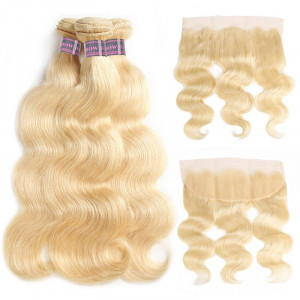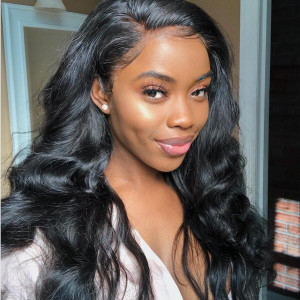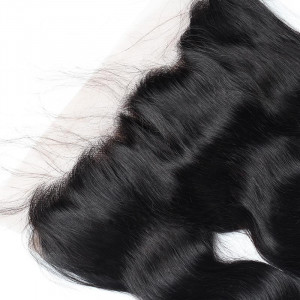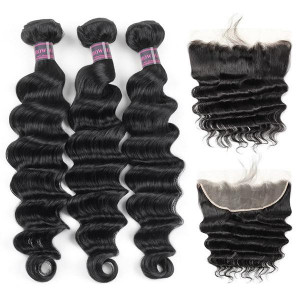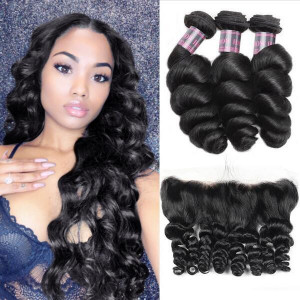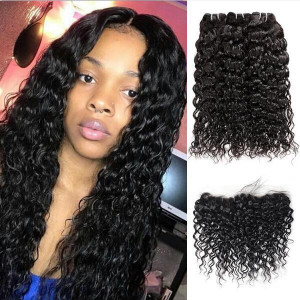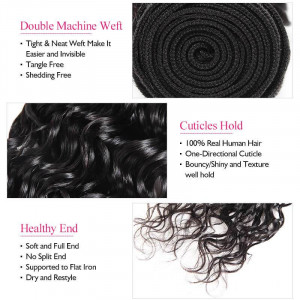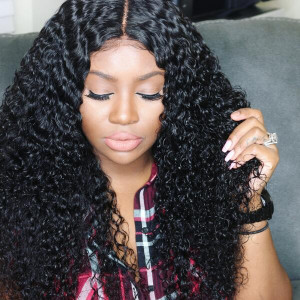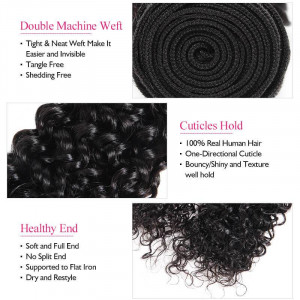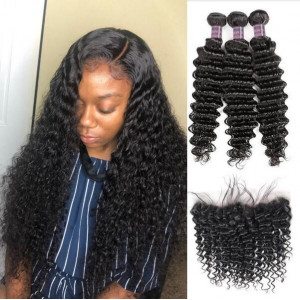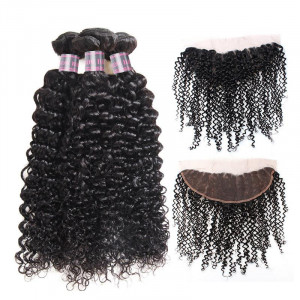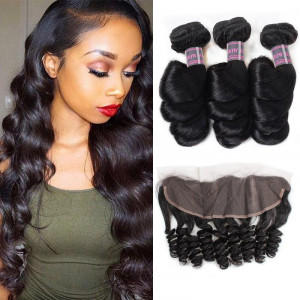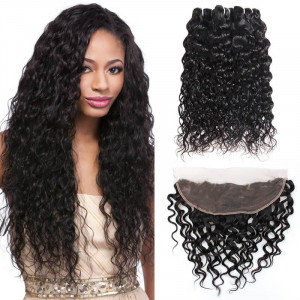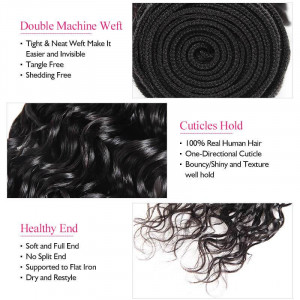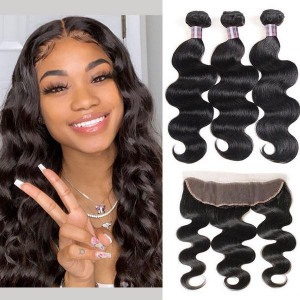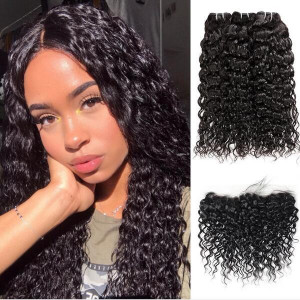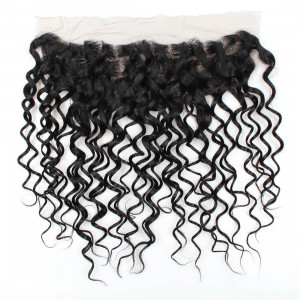What's the difference between a lace closure and a lace frontal?
People frequently mention lace frontal and closure when discussing extensions or wigs. What are lace frontals and closures, and why would one be preferred? More importantly, what distinguishes a lace frontal from a lace closure? Which is superior to the other?
What is a Closure?
A lace closure is an excellent option for women who enjoy wearing simple hairstyles with center sections. There are three types of closures: a middle part, a free portion, and a three-part closure.
Closures do not reconstruct a hairline. The closing specifications are usually in the shape of a square. They can be 4 by 4 inches, 5 by 5 inches, 6 by 6 inches, or 7 by 7 inches. It sits in the center, on top of the head, in a horseshoe-shaped area, and spans temple-to-temple dimensions.
The lace closure is inherently thinner and more flexible than the silk closure. It fits your head more easily, installs evenly and smoothly, and provides a natural appearance without merging. Closures with lace are stitched on.
Benefits of using a Lace Closure
In comparison to sew-in lace frontal wigs, it requires less upkeep. Cleaning, conditioning, and style are all part of it, just like natural hair.
It needs regular care and lasts longer than a frontal. Warmer weather is ideal because it may be fixed without glue or customization. After two to three weeks of use, sew-in lace frontal wigs lose their glue.
With a weave, blending your hair's color and texture is simpler. The wearer can color the weave of closure to their preference, shielding their natural hair from potential harm.
What is a Frontal?
The most excellent option for women with thinning edges is a lace frontal. An ear-to-ear lace frontal can be used to conceal hair loss around your hairline with ease. A lace frontal closure is a half-wig sewn together using three to four bundles of hair extending from ear to ear.
There are many uses for a lace frontal. A 360 lace frontal allows you to experiment with various hairstyles, such as pulled-back looks. A lace frontal typically measures 13 by 4 inches.
Although frontals usually cost more, you also require fewer hair bundles. Since lace frontals are placed in front of the hairline, they are typically glued.
Benefits of using Lace Frontals
Compared to other hair extensions, it is simpler to wear and require less installation. It suits women who want to preserve their natural hair and have limited time to get dressed.
It provides versatility for a wide range of hairstyles. The user herself can style the wigs or extensions to get the desired look—from smooth mid-part buns to high ponytails!
It lets air flow through your natural hair and scalp! Wearing a wig for an extended period in hot, muggy weather may be extremely uncomfortable. Lace frontals provide adequate ventilation for your scalp and hair by allowing air to flow through them.
Lace Frontal and Lace Closure: What's the Difference?
What is the difference between a closure and a frontal, and which one should I choose now that we know what they are?
- Size is the primary distinction between the two. Lace closures are typically four by 4 inches and are positioned in the center of the head or on the side for a side section. Lace frontals are usually 13 by 4 inches in size, covering from ear to ear. They offer more coverage, styling options, and the ability to part the hair in different ways.
- The following distinction is adaptability. These closures are 4 inches x 4 inches and require very little upkeep.
- It perfectly complements your natural hair. Closures are typically stitched into place and are designed to mimic the hairline's natural parting. In contrast, frontals are bonded to replicate the hairline from ear to ear and provide styling options.
- Using invisible threading, a competent hairdresser can stitch a lace frontal under the hairline. You can pull a seamless style off your face with lace frontals since they cover your entire hairline.
- Price is the following significant distinction. Lace closures are great for simple daily looks and maintaining a specific style, such as a middle part.
- However, lace frontals are much pricier. You have the option to make a wig with either a frontal or a closure. A frontal provides more styling choices.
The similarities:
People usually braid both to make hair weaves appear more natural. They can also be sewn with human hair extensions to make a wig for the front of a hairpiece.
A wig can have frontals and closures stitched in or manufactured.
Swiss lace of the highest caliber is used for the frontal and closure.
To end an install, you use both of them.
They can be positioned in front of the hairline or behind it.
All of them are created from virgin human hair.
How do you choose between lace closure and frontal lace?
Selecting the ideal one for you will be easier if you know their differences. Ultimately, the choice depends on the style you want to wear and how versatile you wish to seem.
The ideal option would be a lace frontal if you prefer to pull your hair back. Closure is an excellent option if all you want to do is conceal your implant with a scalp that appears natural. Closures made of lace are less expensive because of their modest size and structure.
Which One Is Better: The Lace Frontal or The Lace Closure?
Which is superior? With both, you'll have a complete and perfect install that will give the appearance that your hair is growing right out of your head. The closure that appears most natural on you is the best one.
You can braid your natural hair and keep it safe with both. It follows that all of your natural hair will be included. The cost, size, and variety of lace frontals and closures are the primary distinctions between them.
Therefore, deciding between a lace closure and a lace frontal ultimately comes down to personal taste and desired appearance!
wavy weave%20(1)-1841x1841.jpg)

